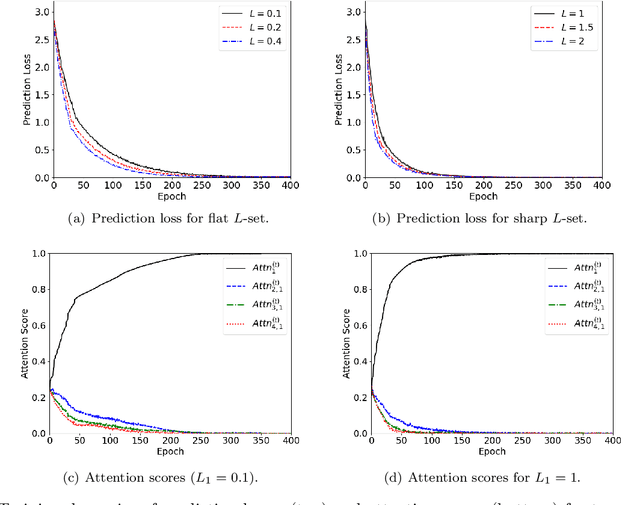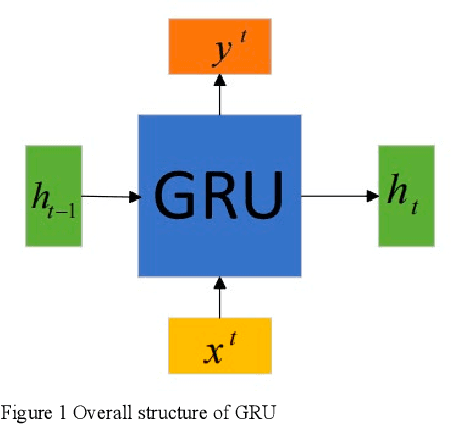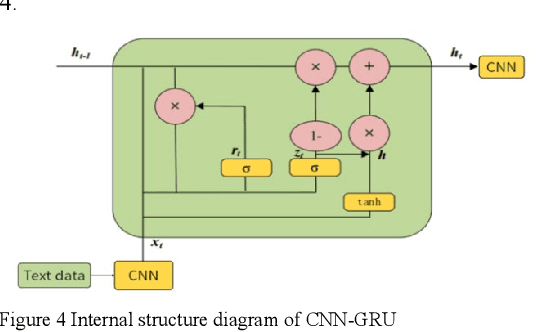Yingbin Liang
Mixture-of-Transformers Learn Faster: A Theoretical Study on Classification Problems
Oct 30, 2025Abstract:Mixture-of-Experts (MoE) models improve transformer efficiency but lack a unified theoretical explanation, especially when both feed-forward and attention layers are allowed to specialize. To this end, we study the Mixture-of-Transformers (MoT), a tractable theoretical framework in which each transformer block acts as an expert governed by a continuously trained gating network. This design allows us to isolate and study the core learning dynamics of expert specialization and attention alignment. In particular, we develop a three-stage training algorithm with continuous training of the gating network, and show that each transformer expert specializes in a distinct class of tasks and that the gating network accurately routes data samples to the correct expert. Our analysis shows how expert specialization reduces gradient conflicts and makes each subtask strongly convex. We prove that the training drives the expected prediction loss to near zero in $O(\log(\epsilon^{-1}))$ iteration steps, significantly improving over the $O(\epsilon^{-1})$ rate for a single transformer. We further validate our theoretical findings through extensive real-data experiments, demonstrating the practical effectiveness of MoT. Together, these results offer the first unified theoretical account of transformer-level specialization and learning dynamics, providing practical guidance for designing efficient large-scale models.
Monitoring State Transitions in Markovian Systems with Sampling Cost
Oct 25, 2025Abstract:We consider a node-monitor pair, where the node's state varies with time. The monitor needs to track the node's state at all times; however, there is a fixed cost for each state query. So the monitor may instead predict the state using time-series forecasting methods, including time-series foundation models (TSFMs), and query only when prediction uncertainty is high. Since query decisions influence prediction accuracy, determining when to query is nontrivial. A natural approach is a greedy policy that predicts when the expected prediction loss is below the query cost and queries otherwise. We analyze this policy in a Markovian setting, where the optimal (OPT) strategy is a state-dependent threshold policy minimizing the time-averaged sum of query cost and prediction losses. We show that, in general, the greedy policy is suboptimal and can have an unbounded competitive ratio, but under common conditions such as identically distributed transition probabilities, it performs close to OPT. For the case of unknown transition probabilities, we further propose a projected stochastic gradient descent (PSGD)-based learning variant of the greedy policy, which achieves a favorable predict-query tradeoff with improved computational efficiency compared to OPT.
Large Language Models Achieve Gold Medal Performance at International Astronomy & Astrophysics Olympiad
Oct 06, 2025Abstract:While task-specific demonstrations show early success in applying large language models (LLMs) to automate some astronomical research tasks, they only provide incomplete views of all necessary capabilities in solving astronomy problems, calling for more thorough understanding of LLMs' strengths and limitations. So far, existing benchmarks and evaluations focus on simple question-answering that primarily tests astronomical knowledge and fails to evaluate the complex reasoning required for real-world research in the discipline. Here, we address this gap by systematically benchmarking five state-of-the-art LLMs on the International Olympiad on Astronomy and Astrophysics (IOAA) exams, which are designed to examine deep conceptual understanding, multi-step derivations, and multimodal analysis. With average scores of 85.6% and 84.2%, Gemini 2.5 Pro and GPT-5 (the two top-performing models) not only achieve gold medal level performance but also rank in the top two among ~200-300 participants in all four IOAA theory exams evaluated (2022-2025). In comparison, results on the data analysis exams show more divergence. GPT-5 still excels in the exams with an 88.5% average score, ranking top 10 among the participants in the four most recent IOAAs, while other models' performances drop to 48-76%. Furthermore, our in-depth error analysis underscores conceptual reasoning, geometric reasoning, and spatial visualization (52-79% accuracy) as consistent weaknesses among all LLMs. Hence, although LLMs approach peak human performance in theory exams, critical gaps must be addressed before they can serve as autonomous research agents in astronomy.
Multi-head Transformers Provably Learn Symbolic Multi-step Reasoning via Gradient Descent
Aug 11, 2025Abstract:Transformers have demonstrated remarkable capabilities in multi-step reasoning tasks. However, understandings of the underlying mechanisms by which they acquire these abilities through training remain limited, particularly from a theoretical standpoint. This work investigates how transformers learn to solve symbolic multi-step reasoning problems through chain-of-thought processes, focusing on path-finding in trees. We analyze two intertwined tasks: a backward reasoning task, where the model outputs a path from a goal node to the root, and a more complex forward reasoning task, where the model implements two-stage reasoning by first identifying the goal-to-root path and then reversing it to produce the root-to-goal path. Our theoretical analysis, grounded in the dynamics of gradient descent, shows that trained one-layer transformers can provably solve both tasks with generalization guarantees to unseen trees. In particular, our multi-phase training dynamics for forward reasoning elucidate how different attention heads learn to specialize and coordinate autonomously to solve the two subtasks in a single autoregressive path. These results provide a mechanistic explanation of how trained transformers can implement sequential algorithmic procedures. Moreover, they offer insights into the emergence of reasoning abilities, suggesting that when tasks are structured to take intermediate chain-of-thought steps, even shallow multi-head transformers can effectively solve problems that would otherwise require deeper architectures.
Provable In-Context Learning of Nonlinear Regression with Transformers
Jul 28, 2025
Abstract:The transformer architecture, which processes sequences of input tokens to produce outputs for query tokens, has revolutionized numerous areas of machine learning. A defining feature of transformers is their ability to perform previously unseen tasks using task-specific prompts without updating parameters, a phenomenon known as in-context learning (ICL). Recent research has actively explored the training dynamics behind ICL, with much of the focus on relatively simple tasks such as linear regression and binary classification. To advance the theoretical understanding of ICL, this paper investigates more complex nonlinear regression tasks, aiming to uncover how transformers acquire in-context learning capabilities in these settings. We analyze the stage-wise dynamics of attention during training: attention scores between a query token and its target features grow rapidly in the early phase, then gradually converge to one, while attention to irrelevant features decays more slowly and exhibits oscillatory behavior. Our analysis introduces new proof techniques that explicitly characterize how the nature of general non-degenerate L-Lipschitz task functions affects attention weights. Specifically, we identify that the Lipschitz constant L of nonlinear function classes as a key factor governing the convergence dynamics of transformers in ICL. Leveraging these insights, for two distinct regimes depending on whether L is below or above a threshold, we derive different time bounds to guarantee near-zero prediction error. Notably, despite the convergence time depending on the underlying task functions, we prove that query tokens consistently attend to prompt tokens with highly relevant features at convergence, demonstrating the ICL capability of transformers for unseen functions.
How Transformers Learn Regular Language Recognition: A Theoretical Study on Training Dynamics and Implicit Bias
May 02, 2025Abstract:Language recognition tasks are fundamental in natural language processing (NLP) and have been widely used to benchmark the performance of large language models (LLMs). These tasks also play a crucial role in explaining the working mechanisms of transformers. In this work, we focus on two representative tasks in the category of regular language recognition, known as `even pairs' and `parity check', the aim of which is to determine whether the occurrences of certain subsequences in a given sequence are even. Our goal is to explore how a one-layer transformer, consisting of an attention layer followed by a linear layer, learns to solve these tasks by theoretically analyzing its training dynamics under gradient descent. While even pairs can be solved directly by a one-layer transformer, parity check need to be solved by integrating Chain-of-Thought (CoT), either into the inference stage of a transformer well-trained for the even pairs task, or into the training of a one-layer transformer. For both problems, our analysis shows that the joint training of attention and linear layers exhibits two distinct phases. In the first phase, the attention layer grows rapidly, mapping data sequences into separable vectors. In the second phase, the attention layer becomes stable, while the linear layer grows logarithmically and approaches in direction to a max-margin hyperplane that correctly separates the attention layer outputs into positive and negative samples, and the loss decreases at a rate of $O(1/t)$. Our experiments validate those theoretical results.
Contrastive and Variational Approaches in Self-Supervised Learning for Complex Data Mining
Apr 05, 2025Abstract:Complex data mining has wide application value in many fields, especially in the feature extraction and classification tasks of unlabeled data. This paper proposes an algorithm based on self-supervised learning and verifies its effectiveness through experiments. The study found that in terms of the selection of optimizer and learning rate, the combination of AdamW optimizer and 0.002 learning rate performed best in all evaluation indicators, indicating that the adaptive optimization method can improve the performance of the model in complex data mining tasks. In addition, the ablation experiment further analyzed the contribution of each module. The results show that contrastive learning, variational modules, and data augmentation strategies play a key role in the generalization ability and robustness of the model. Through the convergence curve analysis of the loss function, the experiment verifies that the method can converge stably during the training process and effectively avoid serious overfitting. Further experimental results show that the model has strong adaptability on different data sets, can effectively extract high-quality features from unlabeled data, and improves classification accuracy. At the same time, under different data distribution conditions, the method can still maintain high detection accuracy, proving its applicability in complex data environments. This study analyzed the role of self-supervised learning methods in complex data mining through systematic experiments and verified its advantages in improving feature extraction quality, optimizing classification performance, and enhancing model stability
Dynamic Loss-Based Sample Reweighting for Improved Large Language Model Pretraining
Feb 10, 2025



Abstract:Pretraining large language models (LLMs) on vast and heterogeneous datasets is crucial for achieving state-of-the-art performance across diverse downstream tasks. However, current training paradigms treat all samples equally, overlooking the importance or relevance of individual samples throughout the training process. Existing reweighting strategies, which primarily focus on group-level data importance, fail to leverage fine-grained instance-level information and do not adapt dynamically to individual sample importance as training progresses. In this paper, we introduce novel algorithms for dynamic, instance-level data reweighting aimed at improving both the efficiency and effectiveness of LLM pretraining. Our methods adjust the weight of each training sample based on its loss value in an online fashion, allowing the model to dynamically focus on more informative or important samples at the current training stage. In particular, our framework allows us to systematically devise reweighting strategies deprioritizing redundant or uninformative data, which we find tend to work best. Furthermore, we develop a new theoretical framework for analyzing the impact of loss-based reweighting on the convergence of gradient-based optimization, providing the first formal characterization of how these strategies affect convergence bounds. We empirically validate our approach across a spectrum of tasks, from pretraining 7B and 1.4B parameter LLMs to smaller-scale language models and linear regression problems, demonstrating that our loss-based reweighting approach can lead to faster convergence and significantly improved performance.
Object Detection for Medical Image Analysis: Insights from the RT-DETR Model
Jan 27, 2025



Abstract:Deep learning has emerged as a transformative approach for solving complex pattern recognition and object detection challenges. This paper focuses on the application of a novel detection framework based on the RT-DETR model for analyzing intricate image data, particularly in areas such as diabetic retinopathy detection. Diabetic retinopathy, a leading cause of vision loss globally, requires accurate and efficient image analysis to identify early-stage lesions. The proposed RT-DETR model, built on a Transformer-based architecture, excels at processing high-dimensional and complex visual data with enhanced robustness and accuracy. Comparative evaluations with models such as YOLOv5, YOLOv8, SSD, and DETR demonstrate that RT-DETR achieves superior performance across precision, recall, mAP50, and mAP50-95 metrics, particularly in detecting small-scale objects and densely packed targets. This study underscores the potential of Transformer-based models like RT-DETR for advancing object detection tasks, offering promising applications in medical imaging and beyond.
Integrative Analysis of Financial Market Sentiment Using CNN and GRU for Risk Prediction and Alert Systems
Dec 13, 2024



Abstract:This document presents an in-depth examination of stock market sentiment through the integration of Convolutional Neural Networks (CNN) and Gated Recurrent Units (GRU), enabling precise risk alerts. The robust feature extraction capability of CNN is utilized to preprocess and analyze extensive network text data, identifying local features and patterns. The extracted feature sequences are then input into the GRU model to understand the progression of emotional states over time and their potential impact on future market sentiment and risk. This approach addresses the order dependence and long-term dependencies inherent in time series data, resulting in a detailed analysis of stock market sentiment and effective early warnings of future risks.
 Add to Chrome
Add to Chrome Add to Firefox
Add to Firefox Add to Edge
Add to Edge